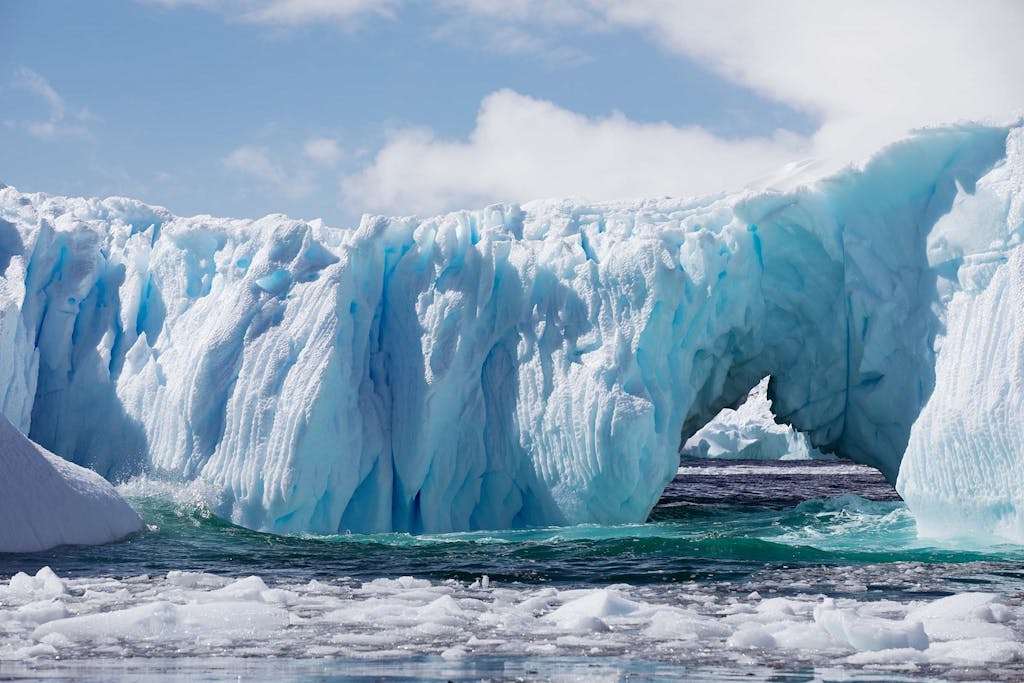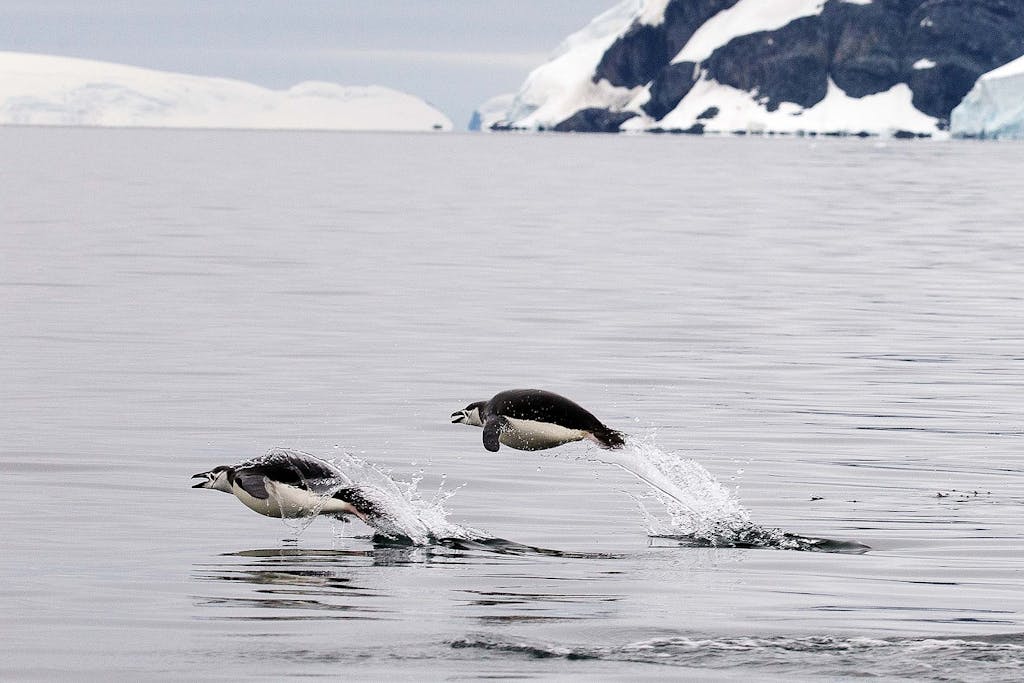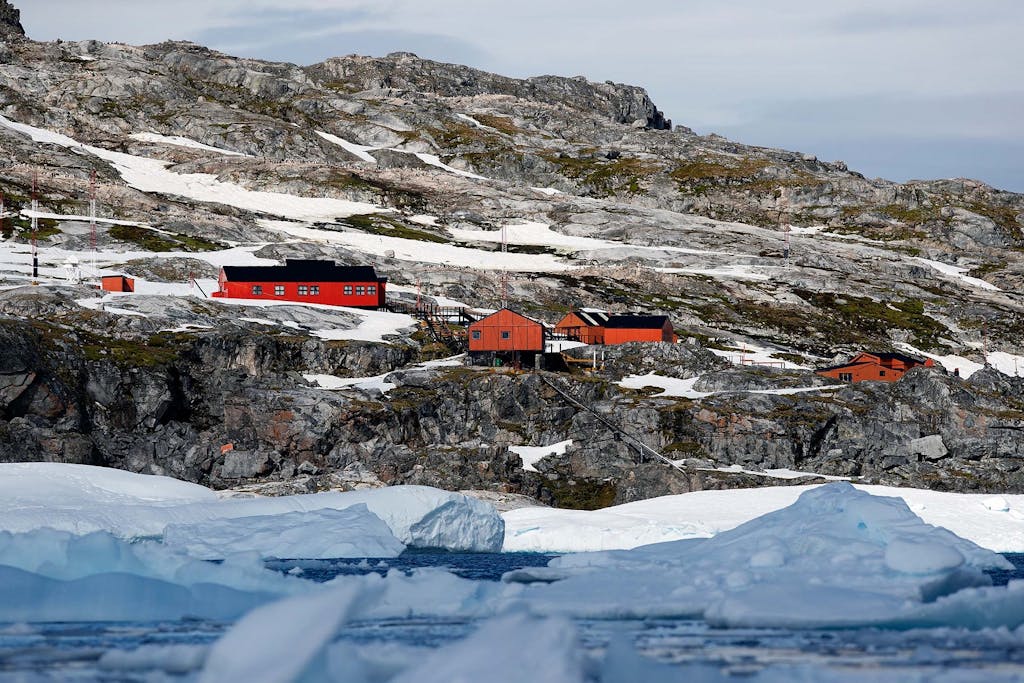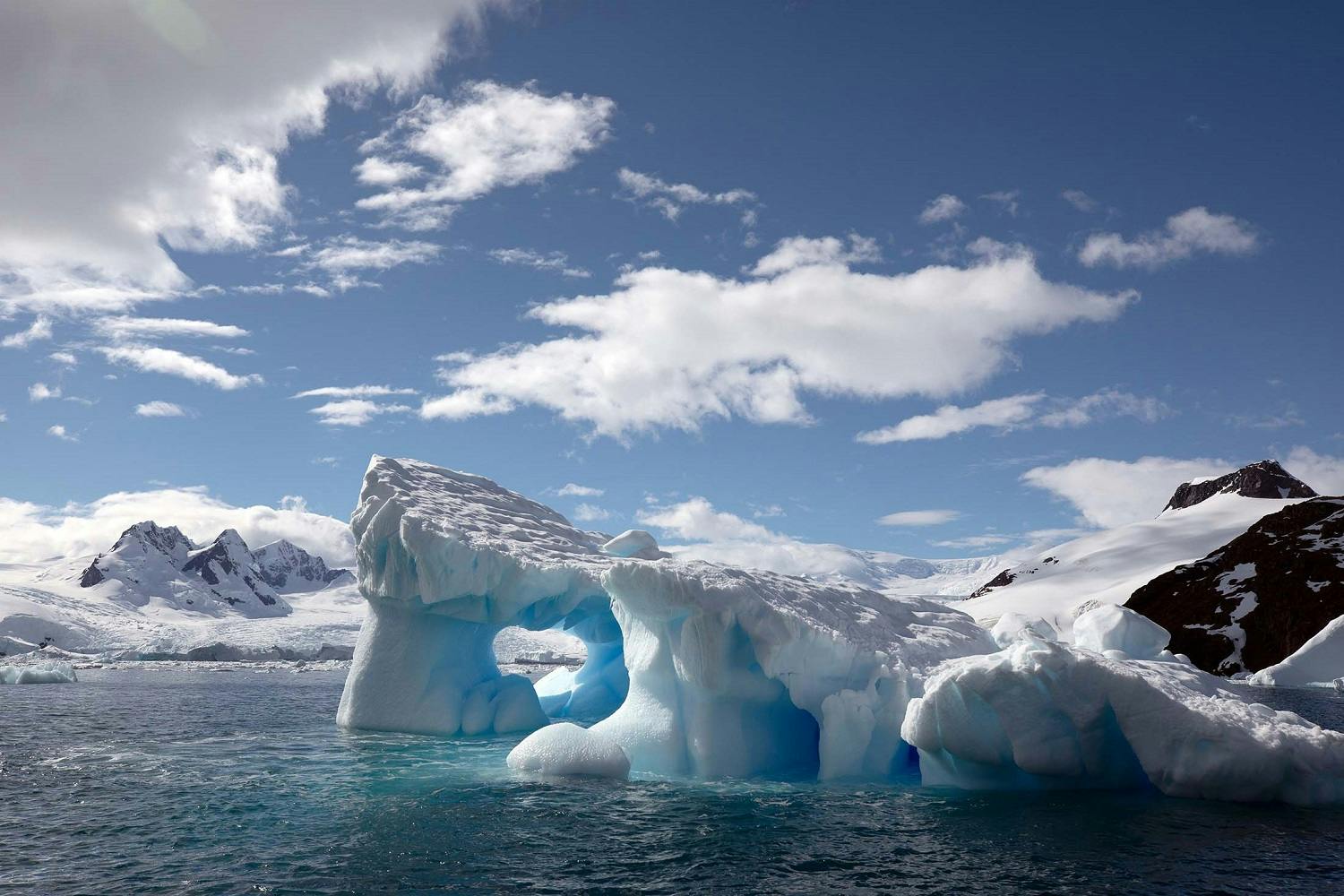The Breathtaking Natural Phenomena of Antarctica’s Cierva Cove
After the initial awe of Antarctica’s Cierva Cove subsides, the multitude of icebergs that surround you come into focus. Their sizes, shapes, hues and surface patterns seem designed to excite, delight and impress. Just like clouds in the sky, the icebergs are unique and look different to every person who encounters them on an Antarctic cruise to the region.
These ice formations are but one of many natural phenomena that have attracted researchers and visitors alike to Cierva Cove for decades.
A secluded spot along Antarctica’s largest and most prominent peninsula, at the northern end of Hughes Bay, this incredible cove is the site of a glacial face that regularly calves ice, resulting not only in stunning icy spectacles but also in conditions that support habitat for hardy mammals and penguins. Scenic and colorful skies complete the line-up of natural rarities found here.

Icy wonderland
Cierva Cove’s beauty can be credited to glacier calving, the shedding of ice from the front of a glacier into the sea, creating icebergs and brash ice (fragments of floating ice less than two meters in diameter).
“The cove cuts deep into the spine of the Antarctic Peninsula and, on a clear day, vast slabs of ice—up to 250 meters—can be seen slowly sliding down from atop the 1,300-meter mountain chain that makes up the peninsula. It is one of the planet’s most magnificent views,” explains Jamie Watts, a member of Silversea’s Expedition Team.
This calving ice creates large and small icebergs of all kinds—round, rough, smooth and assorted. The variety is mesmerizing: Huge ice columns and honeycomb-type ice formations, especially, are almost works of art.
The Antarctic summer sun glistens off their surfaces, and their corners glow green and azure. The blue hues are a nod to high-density ice, as only dense ice, which is devoid of air, cannot absorb blue light.
This ice is not only beautiful, it also offers crucial information to glaciologists as it indicates the age of the bergs.
“Because of the maritime air influence specific to the Antarctic Peninsula, the glacier throughput is regular, so the ice coming out of the bay is moderately young—hundreds to a few thousands of years old,” says Watts. “The deep cove also collects larger icebergs of older ice that flow in on currents and tides from further afield, s
The cove’s beauty can be credited to glacier calving, the shedding of ice from the front of a glacier into the sea, creating icebergs and brash ice (fragments of floating ice less than two meters in diameter).
“The cove cuts deep into the spine of the Antarctic Peninsula and, on a clear day, vast slabs of ice — up to 250 meters — can be seen slowly sliding down from atop the 1,300-meter mountain chain that makes up the peninsula. It is one of the planet’s most magnificent views,” explains Jamie Watts, a member of Silversea’s Expedition Team.
This calving ice creates large and small icebergs of all kinds — round, rough, smooth and assorted. The variety is mesmerizing: Huge ice columns and honeycomb-type ice formations, especially, are almost works of art.
The Antarctic summer sun glistens off their surfaces, and their corners glow green and azure. The blue hues are a nod to high-density ice, as only dense ice, which is devoid of air, cannot absorb blue light.
This ice is not only beautiful, it also offers crucial information to glaciologists as it indicates the age of the bergs.
“Because of the maritime air influence specific to the Antarctic Peninsula, the glacier throughput is regular, so the ice coming out of the bay is moderately young — hundreds to a few thousands of years old,” says Watts. “The deep cove also collects larger icebergs of older ice that flow in on currents and tides from further afield, so we usually find a few city-block-sized icebergs in the cove. Further back there is often residual sea ice from the previous winter.”
The ice to be seen on a Cierva Cove Zodiac tour, therefore, is among the greatest variety of anywhere in Antarctica.

Teeming with life
As you approach the ice floes, you’ll see the area’s seals basking in the sun. Others dive for krill, the lifeblood of the bay. Krill thrives where calving occurs as icebergs stir up the water, oxygenating it and drawing up nutrients from the deep.
According to Watts, krill is the “earth’s densest high-calorie food,” which means these cold seas are “rather nourishing areas for large mammals.”
Crabeater, Weddell, leopard, and fur Antarctica seals can all be glimpsed lying on the ice or swimming in the inky sea, as can humpback whales when they surface.
Among the most remarkable Zodiac excursions in Antarctica, Cierva Cove’s sightseeing experiences often include sightings of Chinstrap Penguins on their nunataks — the rocky outcrops above the ice sheets that are home to their colonies.

Breathtaking views
Alongside the orange-red buildings of Primavera base, one of Argentina’s research facilities, and the gray, rocky landscape, visitors will spot another color — green. Grass, moss and lichen add to the beauty of the area, making it home to one of the densest covers of plant life in the Antarctic Peninsula.
Cierva Cove is blessed largely with clear, blue skies, ideal conditions for seeing it at its best. Sunshine glitters in all directions and keeps lounging seals on the floes, so they can be viewed in their natural positions.
Though days are long when visiting in the Antarctic summer, the close of day is worth waiting for. Watching the sunset through the gaps in the bay’s icy formations, as the sky turns red and orange, reminds us of the beauty of today and the beauty that awaits us tomorrow.

Excited to see the wonders of Antarctica? Explore your options with Silversea’s Antarctica expedition voyages.
